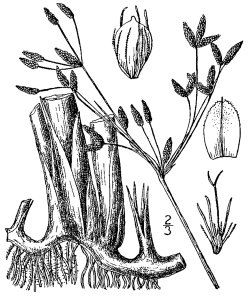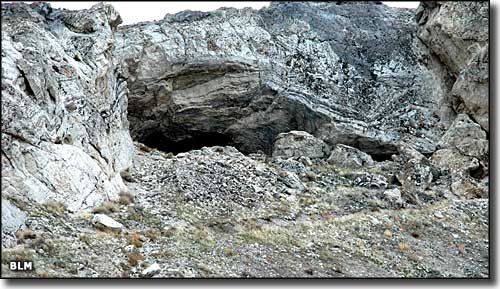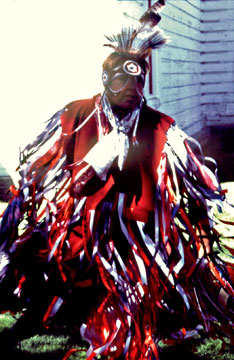Photo Credit: Paiute Powwow by Calmovie
Giants
The word “Giant” was coined in 1297 as the term to describe enormous humans that pop up in the myths of nearly all cultures.
Some of these ancient “giants” have several sources corroborating their existence, though they may disagree on precise facts. The KJV Bible has Goliath at around 9 feet, the Dead Sea Scrolls say he’s about 6’7”. Either way, he was the representative of an enormous race.
While 6’7” doesn’t sound that outlandish today, consider that better nutrition and natural human evolution have raised our average heights by nearly a foot over the centuries. Still, Sultan Kolsen, 2018’s world’s tallest man, is 8 feet tall–a modern Goliath. However, Sultan’s height is due to pituitary gigantism, a hormonal condition allowing growth hormones to run amok. Sultan is unique, unlike the group of 34 mummified giants found together in Mexico in 1930. These giants’ average heights were between seven and eight feet. Sultan would have fit right in with them.
In the last two hundred years as archeology has become a bit more of a science, legitimate giant skeletons have been found, ranging from 7 feet to 12 feet, though some unproven are as tall as 36 feet. For a quick overview of the most famous giants, look here.
The Si-Te-Cah: Red-headed Cannibals
Si-Te-Cah means “tule-eaters” in the Paiute language. The persecution by Paiutes of the Si-Te-Cah drove the giants to live on rafts made of tule–a fibrous water plant. Tule, naturally, became a part of their diet.

Photo Credit: Schoenoplectus acutus by S. Watson, 1912
If I had to choose between humans and tule, I might just choose humans.
According to Paiute oral history, tule was not the preferred lunch of the Si-Te-Cah. They were said to be cannibals, eating the flesh of Paiutes they conquered in their enduring war.
The neighboring tribes joined with the Paiutes to finally annihilate the Si-Te-Cah–driving them into what is now known as Lovelock Cave in western Nevada. The tribes piled brush at the cave mouth and set it on fire, killing the last of the Si-Te-Cah.

Photo Credit: Lovelock Cave by the Bureau of Land Management
Lovelock Cave. What a place to be burned alive.
The giants were forgotten, continuing only in Paiute myth, until 1911. Miners extracting bat guano from Lovelock Cave unearthed giant jawbones and thousands of other Paiute artifacts.
Good science rains on the “giant” claim: the miners were not trained in anatomy and could have mistaken the bones of large cave bears for humans. The lack of proper documentation calls the “tourist displays” of the bones into question–giants sell knick-knacks in an otherwise forgettable region. Even the red hair may be due to chemical reactions over the centuries reducing the pigment to red. Basically, it all might be wrong, except for the shoes. Sandals measuring up to 15 inches were also found in the cave, indicating owners above seven feet tall.
Most of the well-preserved skeletons and mummies were destroyed through mining or through human ridiculousness:
“The best specimen of the adult mummies was boiled and destroyed by a local fraternal lodge, which wanted the skeleton for initiation purposes.”
–Lewellyn Loud and M. R. Harrington, University of California Publications in American Archaeology and Ethnology, 1929.
I wonder what the initiation was. “Must be this tall to join our club.”
I want to know what you want to know: were the Si-Te-Cah cannibals?
A proper scientific excavation of Lovelock Cave in 1924 produced three human bones with signs that their owners had been eaten, possibly due to famine.
“These had been split to extract the marrow, as animal bones were split, and probably indicate cannibalism during a famine.”
–Loud and Harrington

Photo Credit: Paiute Powwow by Calmovie
This Paiute looks good enough to eat.
Were the Si-Te-Cah Cannibals?
The Paiute tribe, conquerors of the Si-Te-Cah, claimed ongoing war with the giants until their eventual defeat. They claim the giants ate their people. The practice of eating others, especially conquered enemies, in order to gain their strength or other magical powers has been around a long time. Cannibalism is still practiced today for similar reasons. It isn’t far-fetched to believe that the Si-Te-Cah would eat those they conquered, or even capture Paiutes to eat, both as a scare tactic and as a method of gaining power.
History is recorded by victors. The Paiute traditions could have taken the legends of some slightly taller neighbors that had become extinct and made them out to be terrifying cannibals with crazy red-hair coming at you with a dinner knife in order to give reason to the unity of Paiute with other tribes. Remember, the tribes together–regular sized Native Americans–were able to defeat the giants because they worked together. Sounds like a lovely moral to me. Just conjecture.
The evidence of cannibalized humans at Lovelock Cave where the Si-Te-Cah were found indicates that someone was eating other humans. Whether it was the “giants” or not, and whether it was a famine compelling them to eat humans or whether they had just acquired the taste, is unknowable.
If you walked west from Lovelock Cave for a day and a half, you would find yourself at Donner’s Pass (don’t go during the winter). Driven to extreme survival measures during the winter, it isn’t unreasonable to believe the conditions which drove the Donner Party to eat their dead could also have happened to the cannibals in Lovelock Cave.
We’ll never know who the Si-Te-Cah really were, how many existed, and what their lives were like but their war with the Paiutes sounds like an innovative book idea.
Do you have any other ideas about who the Si-Te-Cah were? I want to see it in the comments.


I have so many questions! I am trying to find more research and evidence of who these people were. As a giant redhead in my own right, 6’ female, I am personally vested in this legend.
LikeLike
According to Sarah Winnemucca Hopkins in her book “Life among the Paiutes” she said the Lovelock cave was unknown to exist by her people until her tribe along with Shoshone tribesman chased the Sitecah, at which time the foe took refuge within the cave. This statement by Hopkins contradicts what the mainstream explanation of the caves existence states. Ancient Native Americans DID NOT occupy the cave BEFORE the sitecah were burned alive there. The Humboldt museum in Winnemucca has a display with some of the artifacts found within the cave, and a site map of where and at what levels the artifacts were discovered. The major clue to this story is Hopkins description of a dress she had that was previously made by her people from the hair of these barbarians her tribe did battle with. The dress was referred by her people as “A Mourning Dress”. Now, if the dress was a mourning which constitutes sadness dress, then what was it about this battle which caused the thought of it to cause mourning? It’s simple and logical that there is more to this story then has been told to the general public. You don’t mourn vanquishing an enemy that are cannibals, you celebrate it. Furthermore, the artifacts that were found including the sandals were in good condition, some of the baskets were still able to hold water. You don’t abandon your tools that are still functional. The artifacts were left in the cave as offerings to appease the spirits of these beings. But the TRUE reason as to WHY they were killed might never be known. The story that they were cannibals that dug trenches so that Paiute tribesmen would fall into these trenches to be used as food I think is greatly exaggerated. I explored the regions of New York canyon where according to Paiute legend these barbarians built a pyramid type structure, and although I did not find any pyramid, I did find trenches that covered a region just East of the canyon. These trenches looked as though someone was looking for something, they didn’t correspond with any trail system that may have existed on the shores of ancient lake Lahontan. According to the book of Enoch, the Watchers which were the parents of the biblical giants (Nephilim) were cast into the wilderness beyond Dudael which was beyond a great expanse of water. The Sitecah were looking for their parents, hoping to unearth and free them. Why else would a tribe of people be in hostile locations, when the place they came from had bountiful food and water? Also according to Paiute legend the Sitecah came from the regions of Mt Shasta where the Atsugewi tribe was peaceful and benevolent and there was plentiful food for all. Hopkins stated that the Sitecah lived on rafts upon lake Lahontan which would explain how they survived the biblical flood story. I’ve been in the lovelock cave, and the first time I was there I most definitely felt the presence of something which supports what the book of Enoch says about where the giants bodies die. The book of Enoch states that wherever the spirits of the giants leave their bodies, in that place will their spirits reside forever, always to be thirsty and hungry. The second time I went to the cave, I took cherries and water and left them as an offering to these spirits. To say my life has improved since that day is an understatement. It Is What It Is.
LikeLike
Hello, great post on a very interesting subject! I believe the Si-Te-Cah were real. I just released a book on this subject titled, “The Red-Haired Giants of Lovelock Cave & Other Ancient Mysteries.
LikeLike
I recently stumbled upon this myth/legend. I’m looking for more evidence but sadly, it doesn’t seem to exist. Egyptian lore was recorded from at least as old as these giants. Where is the historical record from the U of California?
LikeLike
I’m just simply fascinated ~~~
LikeLike